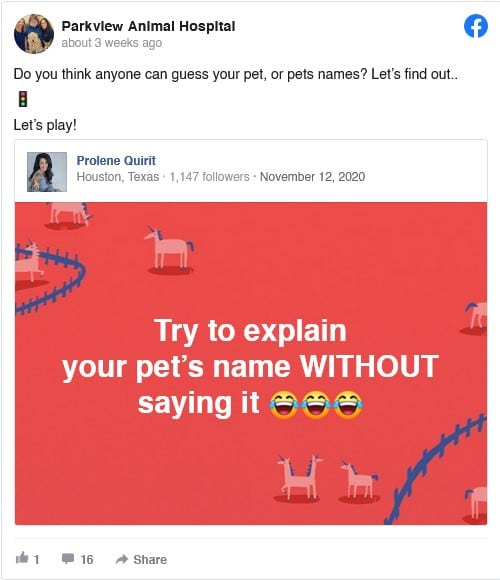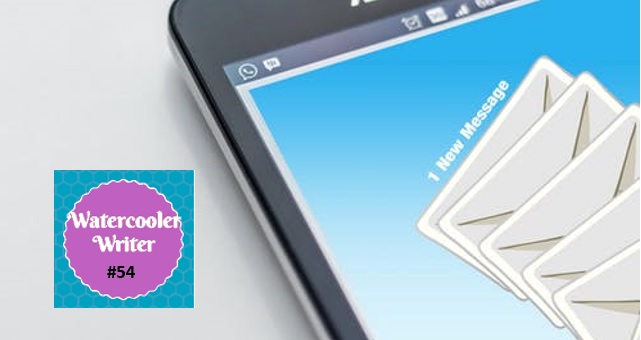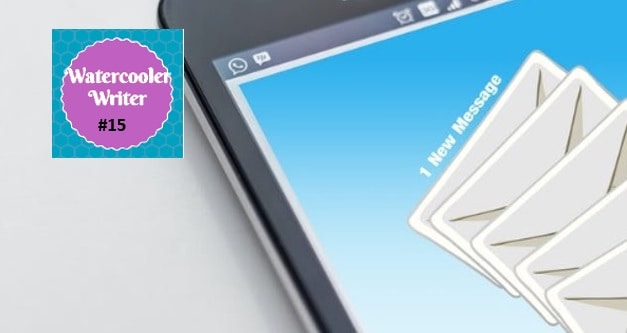Sometime around the close of the 20th century and the dawn of the 21st (but prior to the advent of Web 2.0), many companies began implementing a relatively new technology: complex phone systems.
The idea was that customers could help themselves to the information they sought by navigating tele-menus from their touch-tone phones.
Almost every major corporation and even many small ones reduced the number of customer service agents that they kept on staff and barricaded the few that remained behind a labyrinth of automated recordings.
What followed was years of consumer frustration.

If you wanted to dispute a discrepancy on a phone bill or question an item on a bank statement, the average American customer would have to first prepare mentally to do battle with the brainless robot that would answer on the other end of the line.
Discussing the aggravation caused by these phone systems became something of a pastime during these years.
Occasionally, you would meet someone seemingly grounded by a new type of Zen, who was always able to get through to a live human agent or even find a solution to their problems using just the automation without any hiccups.
However, a much more common species for the era was the screamer. This was the guy or gal who would instantly begin yelling things like “Operator!” or “Customer Service!” before even choosing between English and Spanish, as if there were still real people on the other end of the line who were just really far away.
Then there were the zero pushers—the people who would advise that if you simply pressed the zero button an untold number of times the phone system would go into a kind of cardiac arrest and an actual human would come to your aid.
All the different companies that used these systems were fully aware of the angst with which the populace regarded them. However, rather than revert to the good old days of human customer service, the companies doubled down on the technology, thinking that what we didn’t like about it was its less-than-humanness.
So, instead of giving us what we really wanted (an easier time), they gave us slightly more convincing robots. While the recordings were “improved” with a bit more synthetic humanity in the programming, the upgrades just caused us to become even more enraged.
It was somewhere around 2005 when most of this consternation began to blow over as more and more companies moved the bulk of their self-serve options to the web. Finally, we could all remain calm and just point, click, and read our way to the answers we sought.
For the most part, this is how things are still going.
Now, on the rare occasion that a more complicated matter springs up where we really do need to talk to an actual human, there’s almost always a live chat option. Through the live chat you can type back and forth with another entity that passes the Turing test with so many flying colors that there’s no way they’re not just as alive as you. It’s really not too bad. In fact, it’s almost kind of fun.
Sadly, as a species it seems we have transcended our need for each other.
What started out as a demand for a return to one-on-one communication that evolved into a tele-dystopian nightmare eventually solved itself with the least human option of all.
And most of us like it this way.
We prefer surfing the web to having a conversation with a salesperson. A typed chat is superior to a phone call with a stranger. Texting with a friend is more comfortable than ringing them up.
The pandemic of 2020 and the various ramifications of social distancing and lockdowns have only served to exacerbate this condition.
Around the globe, humans realized that we could successfully work from home in far greater numbers than ever imagined.
More items, both necessities and luxuries, became fully deliverable than at any previous time in history. And for now, barring any further complications from supply chain shortages, we seem kind of okay with this new status quo.
But with the rise of automation, where does this leave businesses that rely on customer interaction?

The historically extreme turbulence of the economic climate over the past two years has seen many different businesses both succeed and fail. For now, staying relevant and competitive is dependent in part on making and maintaining a human connection to your clientele.
The modern customer is a highly complicated animal that loves new technology and expects constant improvement and increased convenience but shuns any tech that smacks of Big Brother by intruding on privacy or disturbing anonymity.
The modern customer has also grown accustomed to 24/7 online access to detailed information, pictures, and videos from their favorite brands. They also demand, when reasonable, the ability to buy the wares of said brands and to have them shipped at any time of day as well.
What the modern customer has grown weary of is the sterility and lonesomeness of it all.
While it’s not true that mall shopping or main street window shopping is a thing of the past, it’s definitely not what it used to be.
Some brands that were once extremely prevalent in physical brick and mortar locations have significantly decreased in number. Others have moved from storefronts to online only models. Some beloved brands are now completely out of business and are ostensibly gone forever.
Other brands were born into these conditions, however, and have managed to find success regardless of the roadblocks in their way.
One of the ways these brands have pulled this off is by humanizing themselves, finding their customers, and making human connections with them.
One of the best ways to humanize your brand is through social media.
There are a number of social media methods that you could employ that will help you humanize your brand.
6 Ways to Humanize Your Brand Through Social Media
Develop a personality (and stick to it).
While hiring a loveable spokesperson like Flo from Progressive Insurance and having her do all the talking for your company certainly isn’t a bad idea, it’s not what is meant by develop a personality.
You should decide ahead of time what your company’s social media voice should sound like and consistently stick to it.
It depends on what your product or service is and what kind of voice would be appropriate to accompany it.

Take Rolex, for example.
The copy that Rolex implements to advertise their watches sticks to a relaxed but serious, high-brow tone that complements their elegant photography and matches how the company wants you to regard their high-quality, high-priced products.
If Rolex were to suddenly introduce a watch-wearing cartoon character that cracks a lot of jokes about bodily functions, it would be completely off-putting and ridiculous.
But a different yet entirely serious and successful company could do that very thing and get away with it as long as it makes sense on a human level.
It’s possible that The Duluth Trading Company knows its prime customer better than any other company out there marketing themselves today.
Duluth’s main customer base is male, slightly larger than average, works with his hands, spends a lot of time out of doors performing skilled labor, does well for himself, is willing to spend more for quality and durability, and has a great sense of humor.
They maintain a tradition of combining hand drawn depictions of their clothing alongside clear photography and they broadcast humorous commercials that are in line with what their ideal customer finds funny.
Like an actual human being, Duluth’s social media presence reflects these various elements of a real personality and combines them all together evenly and appropriately.
Whether Duluth is being its usual funny old self or if it feels the need to be serious for a bit, the customer base accepts, believes, and appreciates the message because it connects on a human level.
Engage in conversation.
If you want to humanize your brand, you’ve got to speak human.
The use of common, everyday language is key to connecting to your customer base; they’ll appreciate it and subconsciously let their guard down.
Sonic Drive-In is a good example of a large company that rarely hesitates to converse in the language of the common folk.
Sonic also reaches out to their customers and simply asks them to share their pro-Sonic content through hashtags and callouts. The company then shares the best entries on their own page.
Reaching out to your customers and actively asking them for responses isn’t a practice limited to large companies with large followings either.
The Parkview Animal Hospital in Passaic, New Jersey, is a tiny veterinary outfit with a passionate fan club.
The only social media platform they maintain is a Facebook page, but the fun and friendly posts they regularly publish on it are enough to keep their clients feeling engaged.
Parkview is so respected and sought out in their area that they are often closed to new patients and the waiting list is a long one.
Whenever possible, show off your happy customers!

Ask for permission to include their stories on your social media accounts. You’ll be surprised by how often they say yes!
Acknowledge mistakes.
Putting your company out there into the social media world undoubtedly puts you at risk of receiving some very public criticism, but don’t hide it and don’t hide from it—own up to it.
If a customer decides to use the comments section on one of your social media accounts to vent about how one of your products disappointed them, listen!
You should appoint an employee to regularly monitor and respond to social media comments like this.

An unattended complaint looks bad. A deleted post looks bad. But nothing looks worse than a company arguing with a commenter, so don’t do that either!
The best approach is to apologize for their less-than-ideal experience and offer to make it right via a direct, private message.
Other potential customers browsing your posts will see the engagement and know that you take such matters seriously and are willing to do what’s needed to make things right.
Highlight your employees.
If humanizing your brand is your goal, it never hurts to remind your customers that you are a company of humans for humans with real live humans working for it!
Crutchfield, a purveyor of home and vehicle stereos and electronics, practiced this technique long before social media even existed.
Back when Crutchfield’s main mode of communication was their home catalogue, the company would regularly profile their own employees and highlight the individual’s personal car or home stereo system.

With an actual employee also acting as a spokesperson, it gives the customer the impression that your employees are happy (they better be!) and if they enjoy the products that they sell, a regular customer would too.
Crutchfield continues this practice to this day with nearly every one of the posts on their Instagram page.
It’s safe to publicly share company culture with your customers as well.
If you are celebrating a particular milestone, awarding a sales team for reaching a certain goal, or promoting a single staff member for a job well done, feel free to share the news online.
In the minds of your customer base, your company will come across as a positive work environment where hard work is rewarded. In turn, you’ll build more trust with your clients.
Tell stories. Sell the lifestyle.
Your social media accounts shouldn’t be reserved for just product placement and further advertising.
Depending on the focus of your business, you can allow your social media pages to act as forums for the greater lifestyle surrounding your products or the industry you’re engaged in.
If you sell running shoes, alert your customers to upcoming marathons in your area.
If you sell cooking equipment, document an impressive meal that one of your employees prepared at home.
If you are managing a record store, post a picture of a favorite musician and reminisce about a beloved album. It doesn’t always have to be about what you have in stock, how much it costs, and why they should buy it.
Have fun! Use emojis! Get into beefs?

The little pictograms known as emojis that became a huge part of our lives with the introduction of smartphones are here to stay.
Their use in social media descriptions have become so commonplace that it’s now rare to see a caption that doesn’t include at least one.
Embrace them, have fun with them, and test yourself to see how creative you can get with their use. But don’t get hung up on how much time you think you’re wasting scrolling through them—apparently social media posts that feature emojis get 48% more engagement!
Another idea to consider is that of a public, social media rivalry with a competitor.
If you have a good sporting relationship with another business in your area or industry, it’s fertile ground for a lot of potential comedy that your mutual customer bases might enjoy. It can double as a cross-promotional opportunity.
Wendy’s and Burger King famously spar with each other from time to time in an ongoing social media troll war.

And sometimes it can get downright nasty.
But the “beef” between the two fast food giants never seems to generate any negative press.
It does generate a lot of laughs for their fans, though.
Honorable Mentions
Sometimes it’s not what you do on social media that gets you the most positive attention, but what you do as a business in real life that then ends up on social media that makes the biggest impression.
Chewy is an online retailer of pet supplies and food. They are a subset of PetSmart, run by executives from Amazon, Wayfair, and Wholefoods. They have decent prices. Their website looks a lot like Walmart’s.
From a distance they don’t seem like much to write home about—just another big box warehouse that has what you’re looking for.

But then Chewy’s customers started getting the letters.
Eerily specific thank you notes started arriving in the mailboxes of customers who had made purchases from the website that really really looked like they were handwritten.
Fake handwriting on junk mail was nothing new, but these notes, as neat and legible as they could be, really had an authenticity to them. They were so intriguing to so many people that Chewy’s customers began reaching out to one another online to see if they weren’t alone. They weren’t, and that’s how it eventually came out that Chewy really does employ an entire staff dedicated to sending out handwritten thank you notes to each and every customer.
They also send out holiday cards.
Oh, and sometimes they send you hand painted portraits of your pets, too.
Going the extra mile for your customer is basic, age-old, business advice—and it’s still good advice—because even in this modern era there are modern benefits to enjoy from the practice.
Taking the time to perform classy gestures for your customers without publicizing it, without asking for anything in return, without patting yourself on the back for having done it—can lead to exponential organic growth through social media.
JHS Pedals is a small company that manufactures guitar pedals in Kansas City.

The brainchild of founder Joshua Heath Scott (JHS), they have been in business for well over a decade, but over the course of just the past three years they have exploded in popularity by exemplifying every social media technique mentioned in this article.
One of the biggest contributions to their increased visibility is their creation of The JHS Show, a weekly YouTube show hosted by Joshua and his assistant Nick that drips with equal parts charm and comedy. During the show they discuss guitar centric electronics and demonstrate their capabilities through jam sessions. The final segment of each show is called Record Time, where Joshua offers up listening recommendations from often little-known recording artists.
What sets the show apart from others like it on YouTube is that JHS’s own products are the least likely to ever get featured.
In what would traditionally be considered an act of self-sabotage, Joshua eagerly tells the viewer everything he loves about his competitor’s products and demonstrates them for the camera.
Rather than directing potential customers away from his own products, Mr. Scott’s actions have seemingly had the opposite effect. Viewers have become loyal fans, endeared to him and his company. He has become known as an honest entrepreneur and a truly passionate advocate for an industry that was said to be on its last legs only a few years ago.
Thanks to the efforts of Joshua and others like him, the guitar industry has enjoyed a complete rebound.
By adopting some if not all of the practices discussed in this article, you’ll be well on your way towards humanizing your brand and winning over the hearts and minds of your customers.
If you could use some help getting your social media presence up and running, reach out for a quote today!






















